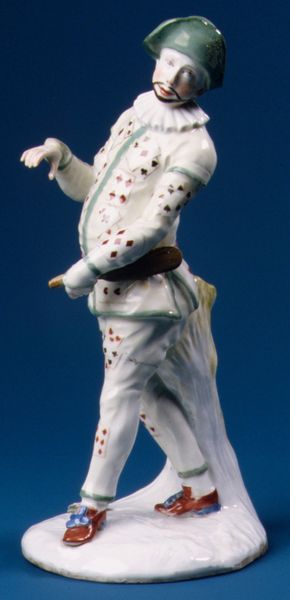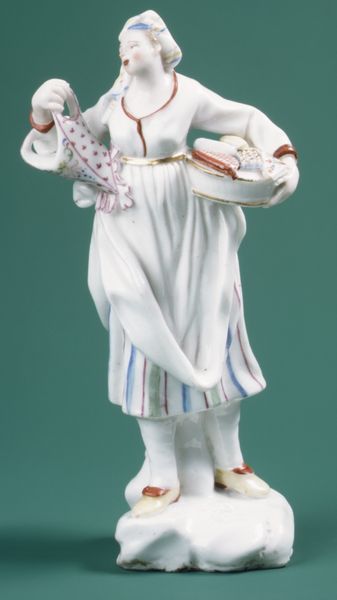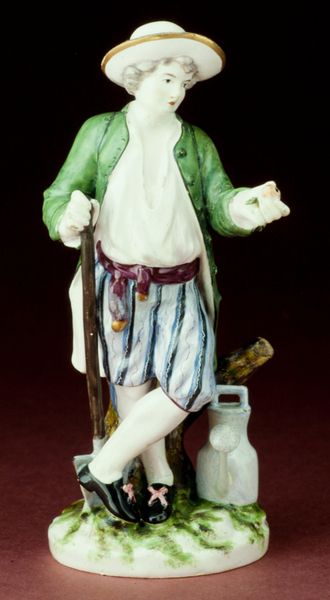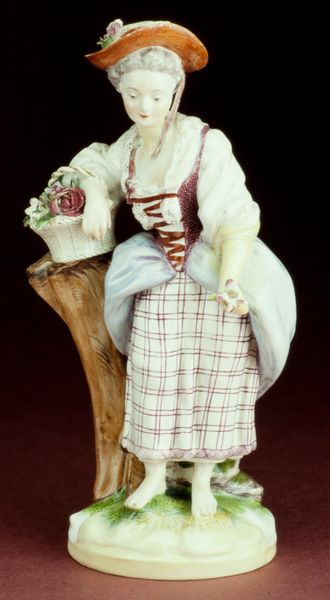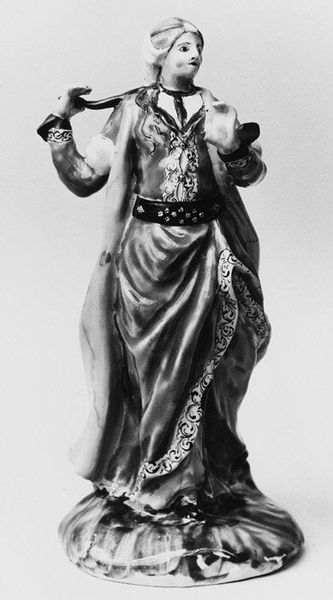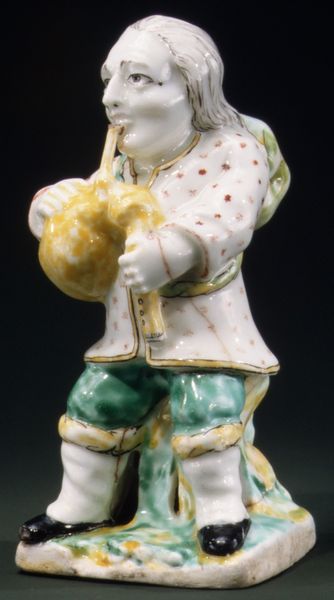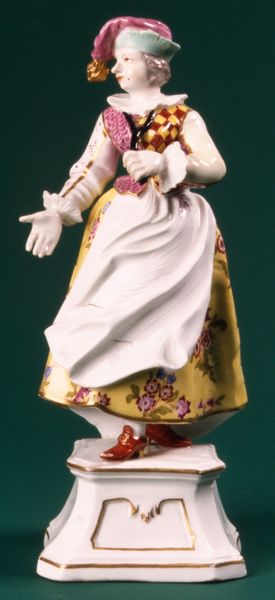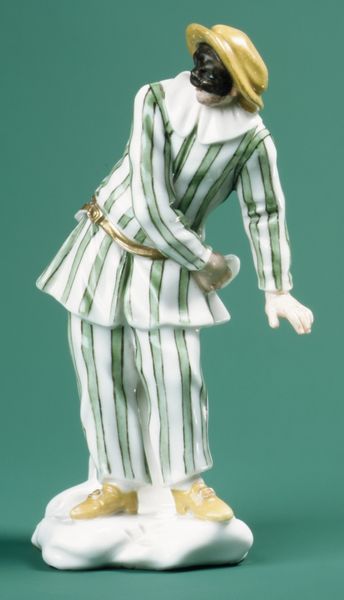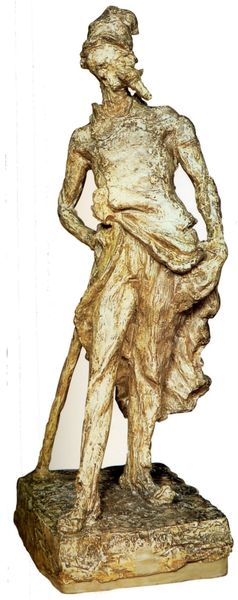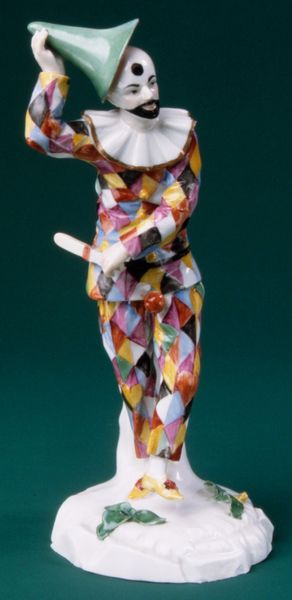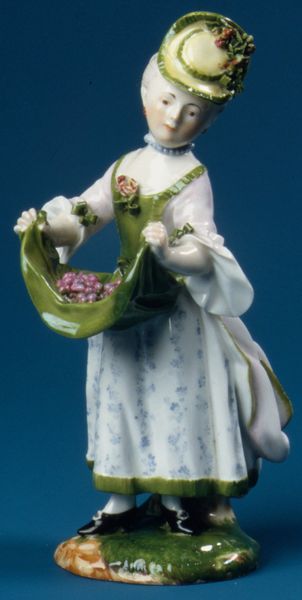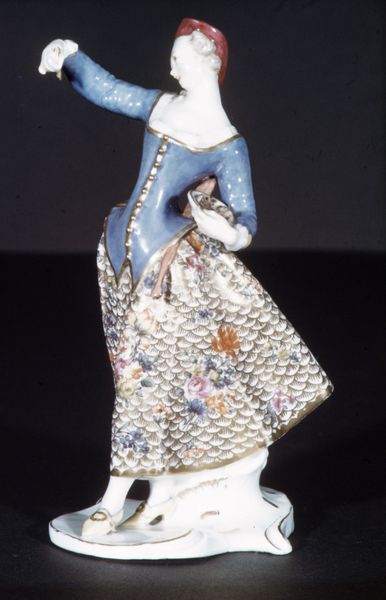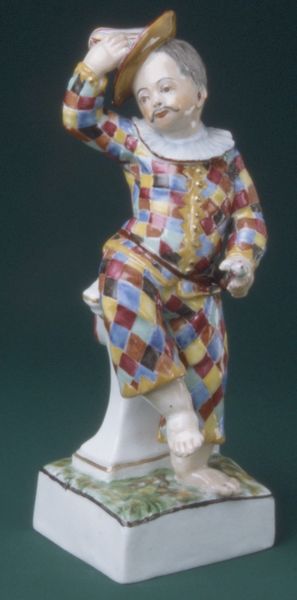
ceramic, porcelain, sculpture
#
baroque
#
sculpture
#
ceramic
#
porcelain
#
sculptural image
#
figuration
#
sculpture
#
men
#
decorative-art
Dimensions: Height: 6 1/4 in. (15.9 cm)
Copyright: Public Domain
Curator: This delicately crafted figure is known as "Beggar," made at the Meissen Manufactory between 1720 and 1730. The medium is porcelain, lending a certain grace to what is, ostensibly, a portrait of poverty. Editor: It's striking how this porcelain figure elevates a marginalized figure. The stark white glaze is so clean and refined that it’s difficult to immediately reconcile with the concept of a "beggar". It appears as if we are meant to be moved by pathos. Curator: The stark white, from a formal perspective, establishes a foundation for understanding proportion. Consider the exaggeration in the figure's limbs and how the lines articulate in a way to almost soften his difficult position. Editor: That reaching hand speaks volumes. The cultural connotations surrounding depictions of beggars are loaded with notions of charity, social order, and perhaps a commentary on wealth inequality. The symbolism is far richer than what we expect on initial glance. Curator: The figure's stance also contributes to the compositional reading; notice the cane. That’s one aspect, along with his disheveled clothing that underscores the symbolic significance, creating, almost literally, an asymmetrical form, which gives more presence to that outstretched hand you were mentioning. Editor: The colors as well, which are so carefully applied–notice the subtle bands of color near the hem of the garment–draws our attention. We see these in other images depicting the disenfranchised throughout art history and can really trace it back through Christian symbology. Curator: And yet the figure avoids becoming caricature through that porcelain sheen and through careful lines that comprise the subject’s features; this piece is so much more complex and intricate. It pushes the materiality beyond surface level interpretation. Editor: Thinking about this piece in relation to its time gives a wider understanding to what the factory sought to communicate. This wasn't just crafting pretty porcelain but commenting on social stratifications and the viewer’s presumed role as an observer to this man's plight. The themes reverberate still. Curator: It does indeed. Thank you. I think we are now invited to understand, a little bit deeper, just how significant Meissen porcelain is and how carefully assembled this porcelain is. Editor: Agreed, that cultural narrative is certainly compelling.
Comments
No comments
Be the first to comment and join the conversation on the ultimate creative platform.
